08 Aug Your Team Cares For Your Patients, But Who Takes Care of Them?
Workers in assisted living and nursing home facilities face unique risks. They must lift and move patients frequently which can lead strains, sprains and chronic injuries if not done properly.
However, following proper safety procedures limits these risks, improves patient and employee safety, and reduces insurance costs. Here are a few ways your company can reduce risk exposure to realize these benefits.
Facilities Analysis
Keeping workers and patients safe requires a thorough analysis of your facilities. Proper lighting in work areas can prevent trips and falls. Clearing obstacles from walkways and removing clutter can also reduce risk. Installing grab bars and handrails in bathrooms reduces the chances of an accident or an employee injury while assisting patients.
Management should establish a clear system for reporting issues, maintaining safe conditions and following up on ongoing concerns. This includes structural or functional issues, cleanliness, security, and patient care complaints.
Ergonomic Evaluation
Since nursing homes and assisted living workers do repeated manual lifting, transferring, and repositioning of patients/residents, ergonomics are extremely important. Work Related Musculoskeletal Disorders (MSDs) such as back strain and spinal injury are the leading and most costly occupational health problem in the U.S.
According to the 2016 Pennsylvania Workers’ Compensation & Workplace Safety Annual Report, 10,930 injuries occurred in nursing & residential care facilities in 2016 and the most frequent case of injury was overexertion.
Facility design can improve patient safety and health care outcomes and provide a supportive environment for staff. A thorough evaluation, implementing new technologies and techniques, and consistent follow up reduces risk.
Employee Training
Safe Patient Handling (SPH) programs reduce injuries from lifting and moving patients and residents. Staff members need training on the proper use of new equipment, and supervisors must monitor workers for compliance.
Many assisted living and nursing home facilities report positive results after incorporating patient handling technology and practices. According to OSHA, successful safe patient handling programs reduce exposure to manual lifting injury by up to 95%. Studies also show assistive patient handling technology reduces workers’ compensation costs for musculoskeletal disorders.
Safe Patient Handling may soon become law under the federal Nurse and Health Care Worker Protection Act of 2015 currently in review with the Subcommittee on Workforce Protections.
Risk Management Plan
Reducing employee and patient injuries and creating a safer workplace makes sense in many ways. Obviously, it offers financial benefits such as lower insurance rates, but more importantly it protects everyone from an unnecessary ordeal.
When you must deal with accidents, claims, and maybe even a lawsuit, it takes you away from the core interests of your business.
By identifying and prioritizing key risks, you reduce the likelihood of problems, and you can focus on what you do best. It also strengthens your brand, attracts more employees and patients, and improves employee retention.
Employee Participation
Risk management starts with a plan and assigns goals and responsibilities to managers and supervisors, but all too often companies do not solicit employee participation. This is very unfortunate because they are the people most likely to identify potential risks and suggest improvements.
Employee participation also leads to a greater sense of belonging, job satisfaction, and higher performance. Workers are more likely to accept changes if they have a hand in them, too.
A suggestion box, employee survey, or safety committee are good ways to voice concerns, hear suggestions, and discuss possible solutions.
Finding Solutions
A lawsuit and negative publicity can seriously impact your bottom line. Conversely, a comprehensive risk management plan can help your business improve safety and morale, reduces insurance and Workers’ Compensation insurance costs, and fortifies your brand’s reputation.
Risk management isn’t about laying blame – it’s about identifying risks and finding ways to minimize or eliminate them. Often times, workplace safety improves greatly when you establish best practices and systems to track performance.
Even well-run establishments deal with accidents and illness. While you cannot eliminate risk, you can design a system that detects problems quickly so issues have less impact. Diligence and a quick response can limit the severity of the problem and reduce the number of workers’ compensation claims and their associated costs.
Gilbert’s Risk Solutions’ long track record and commitment to excellence minimizes risk and cost. We’re local and reliable and easy to talk to, so contact us to discuss your insurance needs.
We can help you develop a risk management plan to reduce your Workers’ Compensation claims, keep patients and employees safe, and protect your business.


No Comments